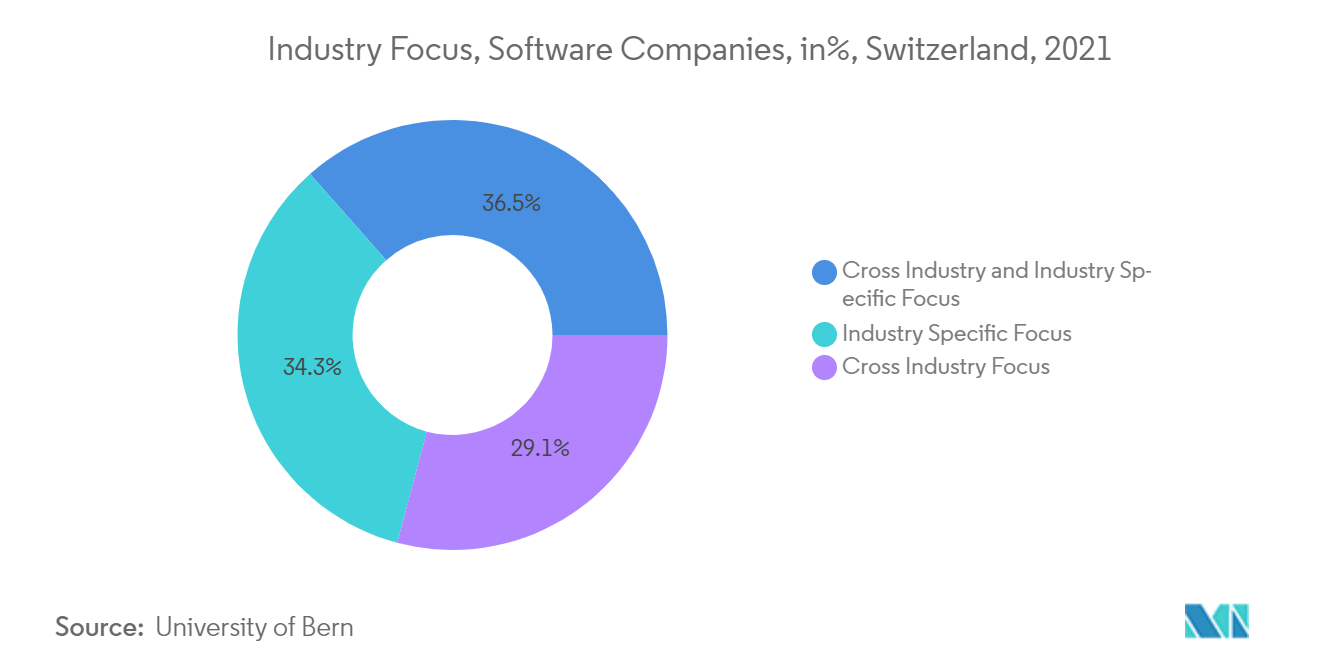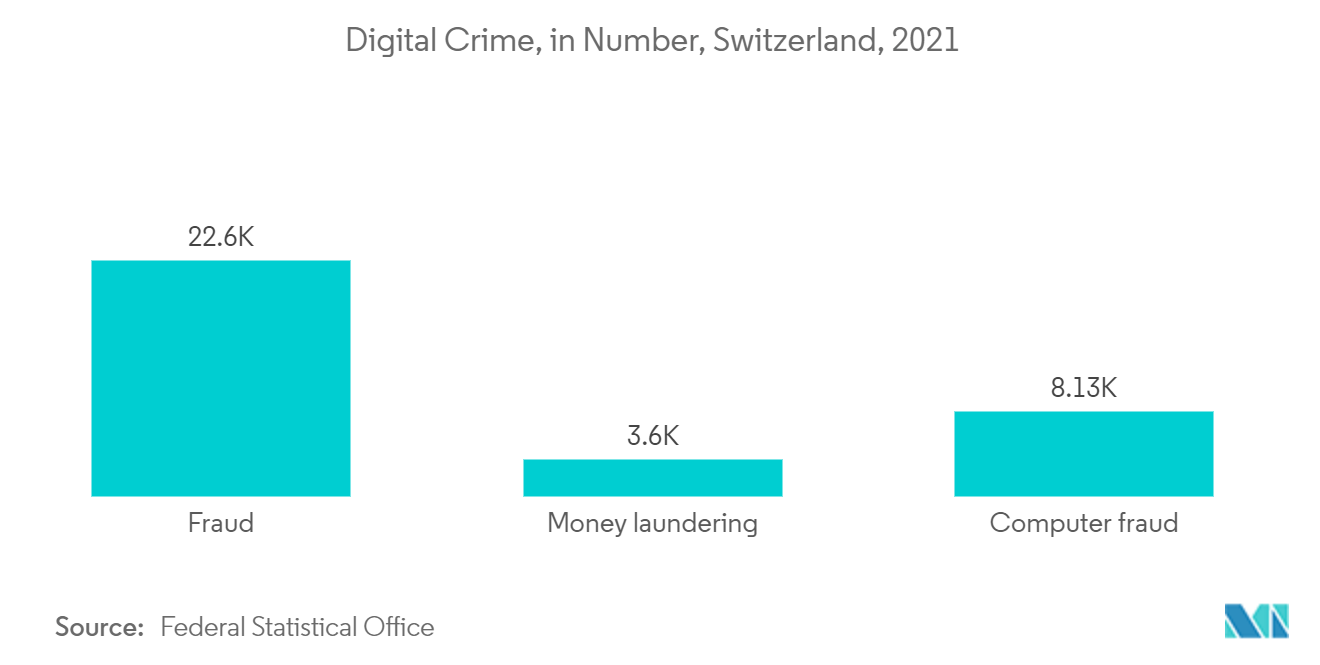Market Trends of Switzerland Cybersecurity Industry
IT Sector will Observe a Significant Growth
- The key infrastructure of any nation includes significant sectors related to information technology and telecommunications, and many different industries depend on them to function. Therefore, its effects may be extensive and far-reaching if a cyber-attack targets the IT and telecommunications sectors. Even false alarms might force a corporation to stop providing vital services that clients and enterprises depend upon.
- Since the telecom industry touches almost all aspects of life alongside critical infrastructure, it could be prone to cyberattacks. Significantly, the industry builds and operates complex networks and stores massive amounts of sensitive data associated with individuals and corporate. Several reasons make this field more lucrative to malicious actors or hackers. Over the years, telecom devices' security vulnerabilities have increased dramatically, equipping a significant space of the threat landscape.
- Distributed Denial of Service (DDoS) attack is one of the most standard types of direct cyberattacks. It could make a machine or network resource unavailable to its intended users by indefinitely or temporarily disrupting services a host in connection with the Internet. These attacks can condense network capacity, swell traffic costs, disturb service availability, and even compromise internet access by hitting ISPs.
- Communication carriers are in the middle of technological evolution. Software-Defined Networks (SDNs) are transforming network management, and cloud computing helps telcos scale for growth. But with these opportunities come risks. Telcos often open themselves to cyber threats since they are responsible for constructing and operating crucial infrastructure needed to communicate and store sensitive data. Skilled hackers and government agencies deploy advanced persistent threats that could operate undetected. Communication channel components, such as edge devices, core network elements, and end-user services run on them, are often targeted.
- Opportunities for operators to reinvent their business models by launching cutting-edge digital services linked to IoT, 5G, e-commerce, data, content, OTT communications, mobile payments, or managed services are abounding in the telecom sector. The demand is further increased by expanding IT infrastructure components such as servers, PCs, information systems, data centers, and virtual machines. For instance, 5G networks can be divided into slices with distinct purposes depending on the usage scenarios. Each virtual network slice might need a different set of security capabilities. Along with the standard, the security of the 5G network architecture should significantly advance.

Identity Access Management is One of the Factor Driving the Market
- The rise in cloud services, social and mobile, has reduced the traditional firewall to increasingly outmoded. Digital identity has become crucial to enforcing access controls. As a result, identity and access management are expected to become a priority for modern enterprises.
- IAM, formerly considered an operational back-office issue, has acquired board-level awareness due to numerous high-level breaches brought on by organizations' ineffective management and control of user access. An expanding regulatory environment and trends like Bring Your Own Device (BYOD) and cloud usage have increased the importance of IAM. Additionally, there are now more dangers associated with data and information access.
- In addition to severe financial and possibly life losses, an identity-related cybersecurity breach by organized crime, state-sponsored military, and others can negatively impact staff morale and productivity and further harm the IT network and the business's reputation. Due to these dangers, a higher standard of identity and access control systems is required.
- The changing business processes brought millions of new devices into the network, demanding effective access management solutions to protect IP and sensitive data from breaches. In the past years, companies have been investing significantly in IAM solutions to perform the job that is out of sweep for humans since hackers and malicious employees are primarily unknown and can inflict massive damage inside an organization.
- As IAM centralizes authorization and authentication, it is a prime candidate to track all access securely for Blockchain platforms. This is often needed for compliance and helps the enterprise detect and prevent fraud. An audit trail entry is logged each time a user logs in or requests specific permissions in a particular context. These stolen and synthesized identities are significantly leveraged to attack the growing E-commerce market in the region and significant retail corporations. Another primary tactic in the region for monetizing the stolen identities is to create new fake accounts using free trials and resell these for profit.



